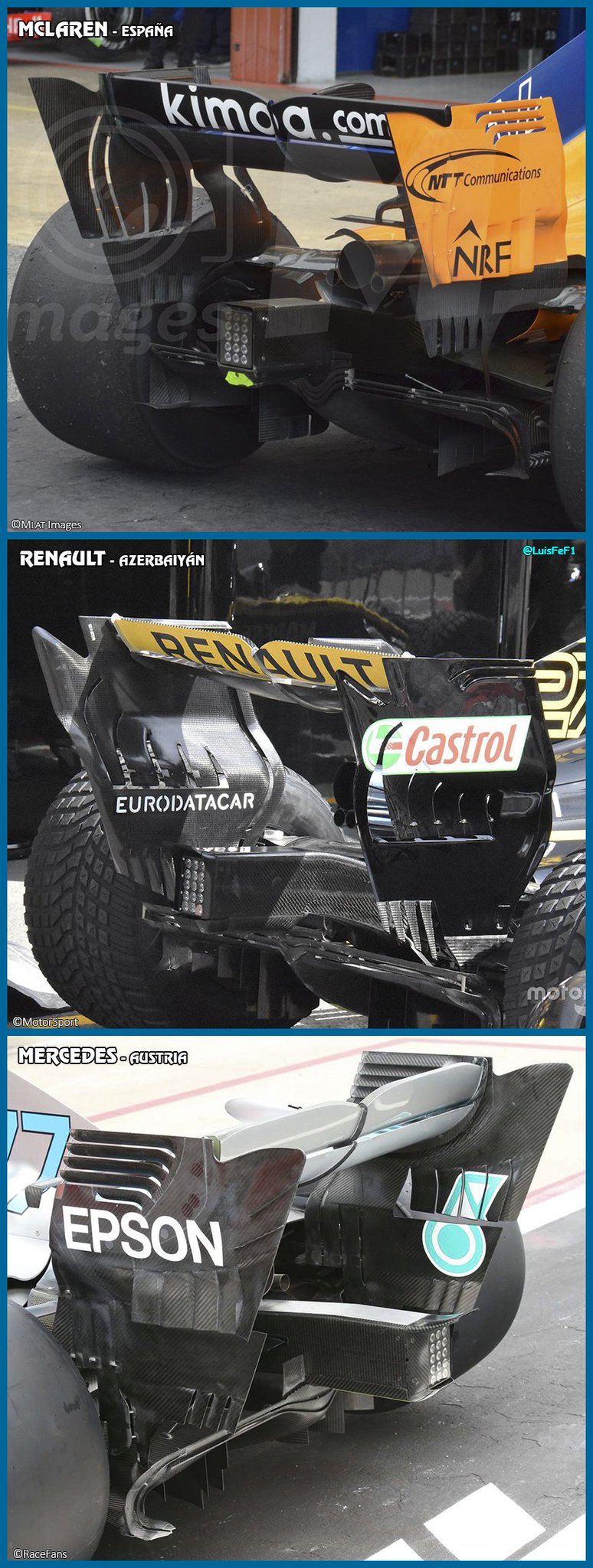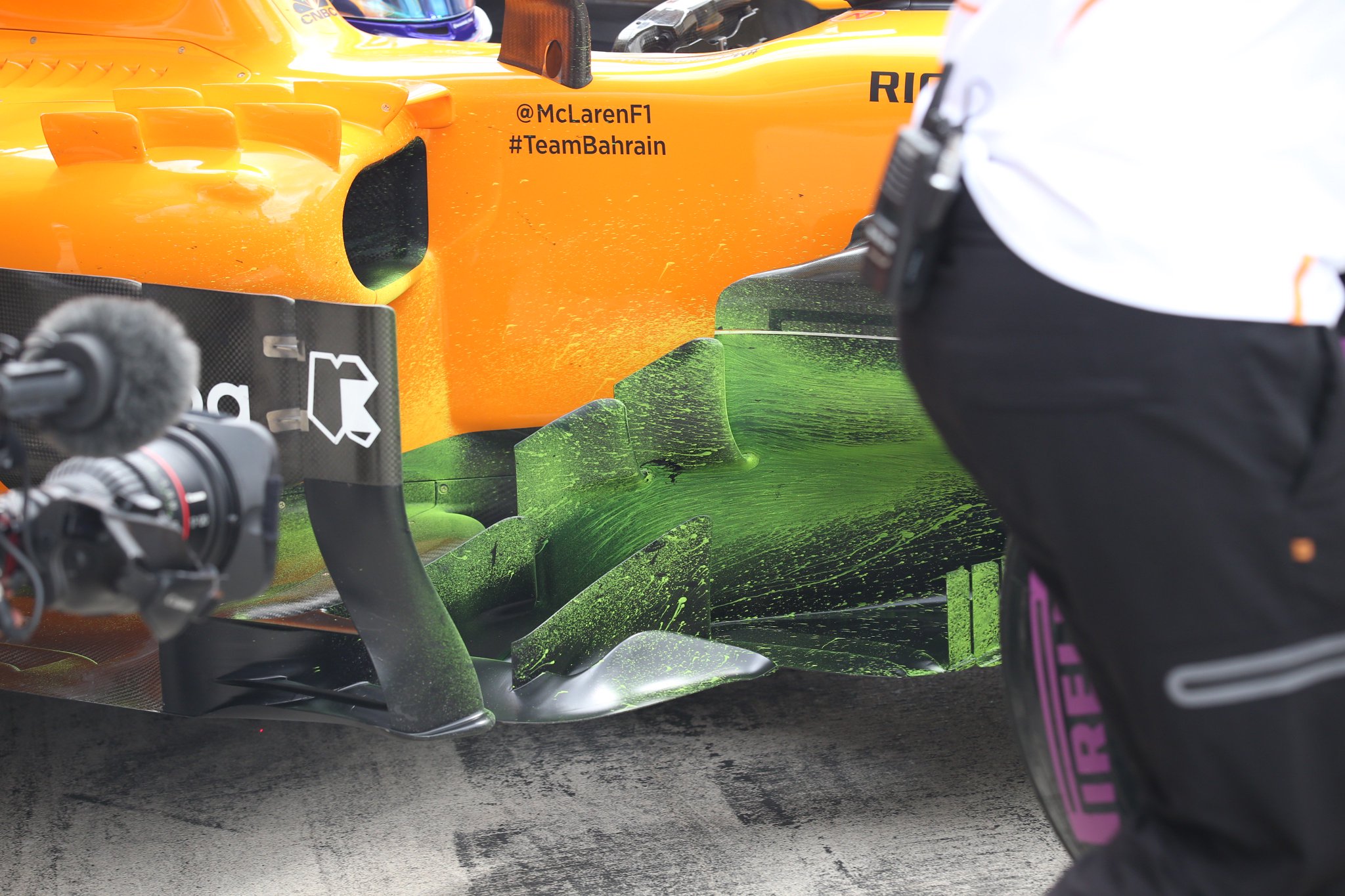- Login or Register
No account yet? Sign up

The supposed s-ducts, which may only be driver ventilation ducts. No one has found their termination points yet. No kiel probes in that photo, that I can see.
I would call this the second main FW philosophy change in the turbo era. After Merc's pronounced outboard vortex tunnel approach. A reduction of the volume below the wing, an expansion of the volume above it, and a footplate-less endplate. McLaren trialed something like this a year or two back.
That's not a S-duct; the car doesn't have one so most likely driver cooling inlet That thing mounted on the car is a kiel probe sensor array.
That's an argumentum ad ignorantiam, a false argument. Just because wings create vortices would not make it genuine to call them vortex generators. By that logic I can call tyres vortex generators as well. While they generate them, it is not their primary purpose.
Purpose is irrelevant a mental fiction, only the function is relevant.trinidefender wrote: ↑30 Jun 2018, 00:52That's an argumentum ad ignorantiam, a false argument. Just because wings create vortices would not make it genuine to call them vortex generators. By that logic I can call tyres vortex generators as well. While they generate them, it is not their primary purpose.
Furthermore, the larger vortex that a wing produces at its tip, the lower the effective span. The larger the vortex, the lower the effective angle of attack near the tips due to the downwash component(or up wash in the case of downforce producing wings) being created near the tips.
On the other hand the purpose of the turning vanes and barge board section is specifically to generate and control a large outward flowing vortex as Vanja mentioned. Some designs use an up wash inducing plane that can generate a bit of downforce however that seems to be a minor bonus.
Something something false argument, the purpose is irrelevant, only the function matters, the only question is does the McLaren device function properly? Does that flowvis on the edge of the bargeboard look like it's functioning properly to you?Some designs use an up wash inducing plane that can generate a bit of downforce however that seems to be a minor bonus.

The purpose is very relevant because of the simple fact that some parts of the car produce lift in isolation however overall help the car produce downforce. For example the vortex generators on top of McLarens sidepods will cause the sidepods to produce more lift than if they weren't there however when looked at as a package they cause the airflow to move around the sidepods to the floor and help the floor and diffuser to produce more downforce.godlameroso wrote: ↑30 Jun 2018, 04:21Purpose is irrelevant a mental fiction, only the function is relevant.trinidefender wrote: ↑30 Jun 2018, 00:52That's an argumentum ad ignorantiam, a false argument. Just because wings create vortices would not make it genuine to call them vortex generators. By that logic I can call tyres vortex generators as well. While they generate them, it is not their primary purpose.
Furthermore, the larger vortex that a wing produces at its tip, the lower the effective span. The larger the vortex, the lower the effective angle of attack near the tips due to the downwash component(or up wash in the case of downforce producing wings) being created near the tips.
On the other hand the purpose of the turning vanes and barge board section is specifically to generate and control a large outward flowing vortex as Vanja mentioned. Some designs use an up wash inducing plane that can generate a bit of downforce however that seems to be a minor bonus.
Something something false argument, the purpose is irrelevant, only the function matters, the only question is does the McLaren device function properly? Does that flowvis on the edge of the bargeboard look like it's functioning properly to you?Some designs use an up wash inducing plane that can generate a bit of downforce however that seems to be a minor bonus.
https://pbs.twimg.com/media/Dg30EJNWAAAKnmT.jpg:large
Lol, you make my point. Clearly that picture tells u, vortices is induced drag from the wing and only occurs at the tip. Why do you think every commercial aeroplane has a winglet on the tip or a blended design. Tip vortices are non factor in modern aircraft, do more research.
To reduce but not eliminate drag, no drag no lift, did you skip high school physics? Also the diffuser and body itself produces downforce on an F1 car, like the kind poster above you mentioned the car works as a whole. Furthermore every moving object that displaces fluid results in vortecies, whether it results in turbulence or entrained vortecies is another matter.McMika98 wrote: ↑30 Jun 2018, 06:56Lol, you make my point. Clearly that picture tells u, vortices is induced drag from the wing and only occurs at the tip. Why do you think every commercial aeroplane has a winglet on the tip or a blended design. Tip vortices are non factor in modern aircraft, do more research.
Anyways the wings you refer to on f1 cars arent really generating huge lift with the exception of front and rear wings so very little chance of creating vortices from diff pressure. Hence the special profiled vortex generators to induce vortex airflow over some part of the body.